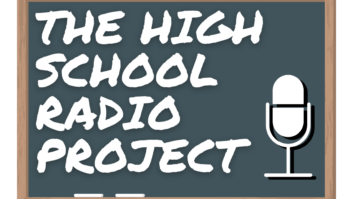Avondale, Ariz., Dec. 20, 2017 – CRAS students recently had the opportunity to train with the next big thing in live remote broadcast production before many seasoned professionals have had the opportunity to do so.
The Conservatory of Recording Arts & Sciences (CRAS; www.cras.edu), the premier institution for audio engineering education, is proud to announce that its students recently were afforded the chance to practice mixing live audio and video feeds from NBC SPORTS in the school’s 42-ft. remote-production mobile broadcast trailer utilizing the recently installed Dolby Atmos mixing workflow during the Can-Am 500 NASCAR Monster Energy Cup Series race at Phoenix International Raceway (PIR) from Nov. 10-12.
“As sports production continues to evolve, keeping up with new technologies such as Dolby Atmos is very important to deliver content to the audience that can rival cinema audio practices,” explained Denis Ryan, Senior Audio NBC, NBCSN NASCAR, ABC/ESPN Indycar. “Consumers expect to hear the same quality of sound from a live production that they hear in theaters.”
CRAS’ 42-foot remote production trailer includes:
·Dolby DP590 Atmos processor
·(4) JBL Control 1 Pro overhead speakers
·Crown 4150 amplifier to power the speakers
·JBL Intonato control speaker management system; a brand new product that has sophisticated capability for fine tuning speaker performance in the room and is purpose-built to handle complex Dolby Atmos® installations
Robert Brock, Director of Digital Department, CRAS, who was on-site training the students during the NASCAR event in Phoenix, stated, “While we were out at PIR, we also deployed a Sennheiser AMBEO® microphone at the start/finish line. It was specifically used to feed the Dolby Atmos® overhead speaker positions. It really brought the audio alive. Our students were amazed at the sonic quality both the Dolby Atmos and AMBEO mic brought to the production.”
Dolby Atmos transports you from the ordinary into the extraordinary with breathtaking, moving audio that flows all around you, even overhead. With Dolby Atmos, listeners are fully immersed in the action.
“Our students received the raw feed from NBC,” said Kirt Hamm, CRAS administrator. “The feeds included all the behind-the-scenes audio discussions and directions between the directors, broadcast crews, producers, engineers, and videographers. With all the background streaming in simultaneously, our students had the opportunity to experience what a broadcast is really like and to practice mixing the audio and follow directions amid the chaos of a live broadcast. This opportunity was devised in an effort to boost potential careers in broadcast audio in a real-world setting.”
Three CRAS teams, each comprised of 10-12 broadcast engineering students apiece, trained during the three days NBC SPORTS broadcasted the Can-Am 500.
“Schools such as CRAS provide the training and exposure needed to be successful,” continued Ryan, who has 30 years of experience in sports production. “Being able to work with Dolby Atmos to create new experiences and incorporating this technology into the CRAS learning environmentwill give students the opportunity to be at the forefront of the industry. Our NBC audio crew is happy to be able to help CRAS provide another level of exposure to its students. Most of us have been helped along the way to learn our craft and it’s our duty to help the next generation be successful.”
The Conservatory of Recording Arts & Sciences is composed of two nearby campuses in Gilbert and Tempe, Ariz. A CRAS education includes broadcast audio, live sound, film and TV audio, music, and video game audio, all taught by award-winning instructors who have all excelled in their individual fields, including sound reinforcement, audio recording and production, digital recording, troubleshooting/maintenance, and music business.
“CRAS’ structured programs and highly qualified teaching staff provide a professional and supportive atmosphere, which is complemented by our small class sizes allowing for individual instruction and assistance for students in engineering audio recordings,” added Hamm. “CRAS has been providing quality vocational training in audio recording for more than three decades, and our ongoing partnership with Dolby will allow even more people to make the leap from surround sound to object-based mixing in Dolby Atmos. The curriculum and equipment are constantly being updated to keep pace with the rapid advancements in the music and sound recording industries. CRAS’ course offerings and subject matter have always centered around the skills and knowledge necessary for students’ success in the audio recording industries.”
The 11-month program is designed to allow every student access to learn and train in all of the Conservatory’s studios which are comprised with state-of-the-art audio recording and mixing gear, the same equipment used in today’s finest studios and remote broadcast facilities, including Pro Tools 11, API Legacy consoles, SSL AWS consoles, Studer Vista consoles, and much more. All students must complete a 280-hour industry internship to graduate from the Master Recording Program II that may ultimately lead to industry employment.
For more information on the Conservatory of Recording Arts & Sciences, please visit www.audiorecordingschool.com, contact Kirt Hamm, administrator, at 1-866-757-3059, or email to [email protected].
About The Conservatory of Recording Arts & Sciences
Based in the heart of The Valley of the Sun with two campuses in Gilbert and Tempe, Ariz., The Conservatory of Recording Arts & Sciences (CRAS) is one of the country’s premier institutions for audio education. The Conservatory has developed a unique and highly effective way to help the future audio professional launch their careers in the recording industry and other related professional audio categories.
-30-












